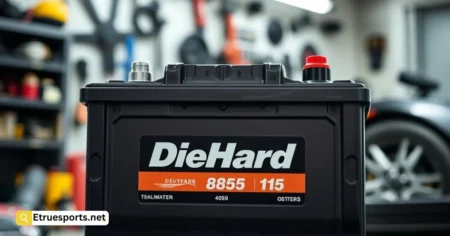Vacuum gauges, or “vacuómetros” in Spanish, are essential tools in various industries for measuring vacuum pressure. These devices are crucial in processes where precise vacuum levels are needed to ensure optimal performance and safety. This article delves into the world of vacuómetros, exploring their types, applications, working principles, and maintenance.
What are Vacuómetros?
Vacuómetros are instruments designed to measure the pressure in a vacuum, which is any pressure lower than the ambient atmospheric pressure. They are used in numerous applications ranging from scientific research and industrial processes to everyday uses in household appliances.
Types of Vacuómetros
There are several types of vacuómetros, each suited to specific applications and vacuum ranges. The primary types include:
1. Mechanical Vacuum Gauges
Bourdon Tube Gauges
These gauges measure pressure by detecting the deformation of a curved tube. They are robust and widely used in industrial settings.
Diaphragm Gauges
These utilize a flexible diaphragm that deflects under pressure. They are known for their sensitivity and are used in lower pressure ranges.
Capsule Gauges
Similar to diaphragm gauges, capsule gauges consist of two diaphragms that form a capsule. They are often used in medical and laboratory applications.
2. Thermal Conductivity Gauges
Pirani Gauges
These measure vacuum levels by monitoring the heat loss from a heated filament. They are effective in the medium vacuum range.
Thermocouple Gauges
These gauges use a thermocouple to measure the temperature change of a filament in the vacuum. They are similar to Pirani gauges but with a different sensing method.
3. Ionization Gauges
Hot Cathode Gauges
These gauges ionize gas molecules in the vacuum using a hot filament. They are highly sensitive and used for ultra-high vacuum measurements.
Cold Cathode Gauges
These operate similarly to hot cathode gauges but use a cold cathode to ionize the gas. They are less sensitive but more robust.
4. Capacitance Manometers
These gauges measure vacuum pressure by detecting changes in capacitance caused by the movement of a diaphragm. They are known for their high accuracy and are used in applications requiring precise measurements.
Applications of Vacuómetros
Vacuómetros are indispensable in a wide range of applications, including:
Industrial Processes
In industries such as chemical manufacturing, food processing, and pharmaceuticals, maintaining specific vacuum levels is critical for product quality and safety. Vacuómetros help monitor and control these vacuum environments.
Scientific Research
Research laboratories use vacuómetros to conduct experiments in controlled vacuum conditions. This is essential in fields like physics, chemistry, and materials science, where accurate pressure measurements are crucial for experimental integrity.
Medical Equipment
Vacuómetros are used in various medical devices, such as suction pumps and autoclaves. Ensuring the correct vacuum level is vital for the effectiveness and safety of these devices.
Automotive Industry
In the automotive sector, vacuómetros are used to test and diagnose vacuum systems in engines. Proper vacuum levels are necessary for the efficient operation of engine components like brake boosters and EGR valves.
HVAC Systems
Heating, Ventilation, and Air Conditioning (HVAC) systems utilize vacuómetros to maintain and troubleshoot vacuum systems. Accurate vacuum measurements ensure the proper functioning of these systems, leading to better energy efficiency and comfort.
Working Principles of Vacuómetros
The working principle of a vacuómetro depends on its type. Here, we outline the basic principles behind the most common types:
Mechanical Vacuum Gauges
Mechanical gauges, such as Bourdon tube and diaphragm gauges, operate based on the mechanical deformation of a component in response to vacuum pressure. For example, in a Bourdon tube gauge, the curved tube straightens under vacuum, and this movement is translated into a pressure reading.
Thermal Conductivity Gauges
Thermal conductivity gauges measure vacuum by detecting the rate of heat loss from a heated filament. In a Pirani gauge, the filament’s temperature changes as the vacuum level varies, affecting its electrical resistance. This change in resistance is used to calculate the vacuum pressure.
Ionization Gauges
Ionization gauges operate by ionizing gas molecules in the vacuum and measuring the resulting ion current. In a hot cathode gauge, electrons emitted from a hot filament ionize the gas molecules. The ion current, which is proportional to the vacuum pressure, is then measured and displayed.
Capacitance Manometers
Capacitance manometers use the principle of capacitance change due to diaphragm movement. As the vacuum pressure changes, the diaphragm deflects, altering the capacitance between the diaphragm and a fixed electrode. This change in capacitance is converted into a pressure reading.
Maintenance and Calibration of Vacuómetros
Proper maintenance and calibration of vacuómetros are essential to ensure accurate and reliable measurements. Here are some tips for maintaining and calibrating these instruments:
Regular Cleaning
Keeping vacuómetros clean is crucial for their performance. Dust and debris can affect the accuracy of mechanical components and sensing elements. Regularly clean the exterior and, if possible, the interior components of the gauge.
Calibration
Calibration ensures that the vacuómetro provides accurate readings. This process involves comparing the gauge’s readings with a known standard and making necessary adjustments. Regular calibration is recommended, especially for gauges used in critical applications.
Handling and Storage
Handle vacuómetros with care to prevent damage to sensitive components. Store them in a clean, dry environment to protect them from moisture and contaminants.
Checking for Leaks
Leaks can lead to inaccurate readings. Regularly check for leaks in the vacuum system and the gauge itself. Use appropriate sealing techniques and materials to ensure a leak-free system.
Choosing the Right Vacuómetro
Selecting the appropriate vacuómetro for a specific application involves considering several factors:
Pressure Range
Determine the vacuum range you need to measure. Different types of vacuómetros are suited to different pressure ranges. For instance, ionization gauges are ideal for ultra-high vacuum, while Bourdon tube gauges are suitable for higher pressures.
Accuracy
Consider the accuracy requirements of your application. Capacitance manometers and some mechanical gauges offer high accuracy, making them suitable for applications demanding precise measurements.
Environmental Conditions
Take into account the operating environment. Some vacuómetros, like cold cathode gauges, are more robust and can withstand harsh conditions, while others may require a controlled environment.
Cost
Evaluate the cost of the vacuómetro and its maintenance. While some gauges may have a higher upfront cost, they could offer better long-term performance and lower maintenance requirements.
Advancements in Vacuum Gauge Technology
The field of vacuum measurement is continually evolving, with new technologies and improvements being developed. Some of the recent advancements include:
Digital Vacuum Gauges
Digital vacuómetros offer enhanced accuracy and ease of use. They often come with features like digital displays, data logging, and connectivity options for integration with other systems.
Miniaturization
Advancements in micro-electromechanical systems (MEMS) technology have led to the development of smaller, more compact vacuómetros. These miniature gauges are ideal for applications with space constraints.
Enhanced Materials
The use of advanced materials, such as ceramics and specialized alloys, has improved the durability and performance of vacuómetros. These materials offer better resistance to corrosion and wear.
Integration with IoT
The integration of vacuómetros with the Internet of Things (IoT) allows for real-time monitoring and control of vacuum systems. This connectivity enhances the efficiency and reliability of vacuum-dependent processes.
FAQs
1. What is a vacuómetro?
A vacuómetro, or vacuum gauge, is an instrument used to measure the pressure in a vacuum, which is any pressure lower than the ambient atmospheric pressure. These devices are essential in various applications, including scientific research, industrial processes, and medical equipment.
2. What are the main types of vacuómetros?
The main types of vacuómetros include mechanical vacuum gauges (such as Bourdon tube and diaphragm gauges), thermal conductivity gauges (like Pirani and thermocouple gauges), ionization gauges (hot cathode and cold cathode gauges), and capacitance manometers. Each type is suited to specific applications and vacuum ranges.
3. How do I choose the right vacuómetro for my application?
To choose the right vacuómetro, consider the vacuum range you need to measure, the accuracy requirements, the environmental conditions, and the cost. Different types of vacuómetros are better suited for different pressure ranges and applications.
4. How do I maintain and calibrate my vacuómetro?
Maintain your vacuómetro by regularly cleaning it, handling it with care, and storing it in a clean, dry environment. Calibration involves comparing the gauge’s readings with a known standard and making necessary adjustments. Regularly check for leaks in the vacuum system to ensure accurate readings.
5. What are some recent advancements in vacuum gauge technology?
Recent advancements in vacuum gauge technology include digital vacuum gauges with enhanced accuracy and connectivity features, miniaturized gauges using MEMS technology, the use of advanced materials for better durability, and integration with the Internet of Things (IoT) for real-time monitoring and control of vacuum systems.
Conclusion
Vacuómetros play a crucial role in a wide range of industries and applications, from scientific research to industrial processes and everyday household appliances. Understanding the different types, working principles, and maintenance requirements of these instruments is essential for selecting the right vacuómetro and ensuring accurate and reliable vacuum measurements. As technology advances, vacuómetros continue to evolve, offering improved performance and new features that enhance their utility in various fields.
Read More: Diịhc: Revolutionizing Cultural Preservation in the Digital Age







